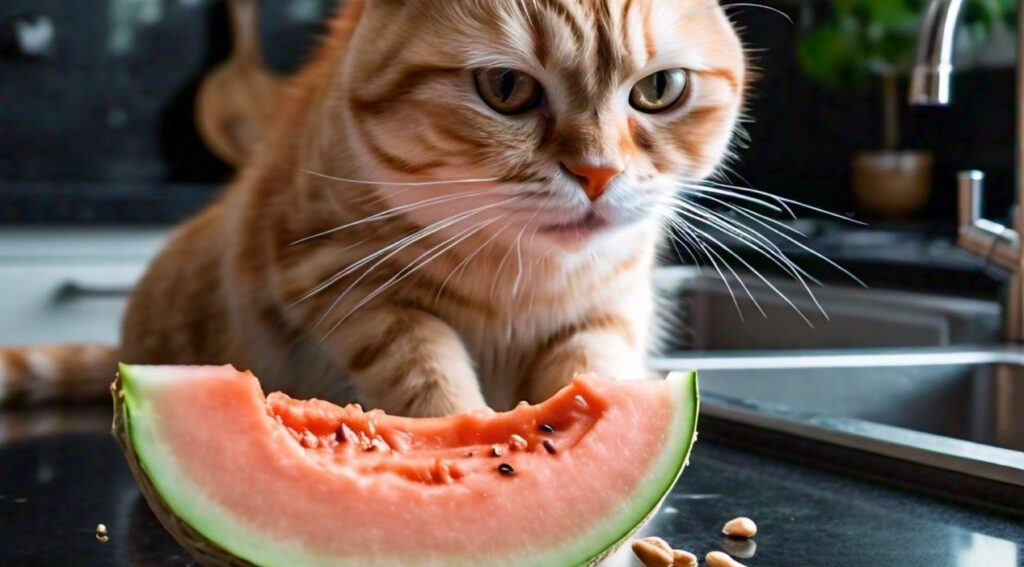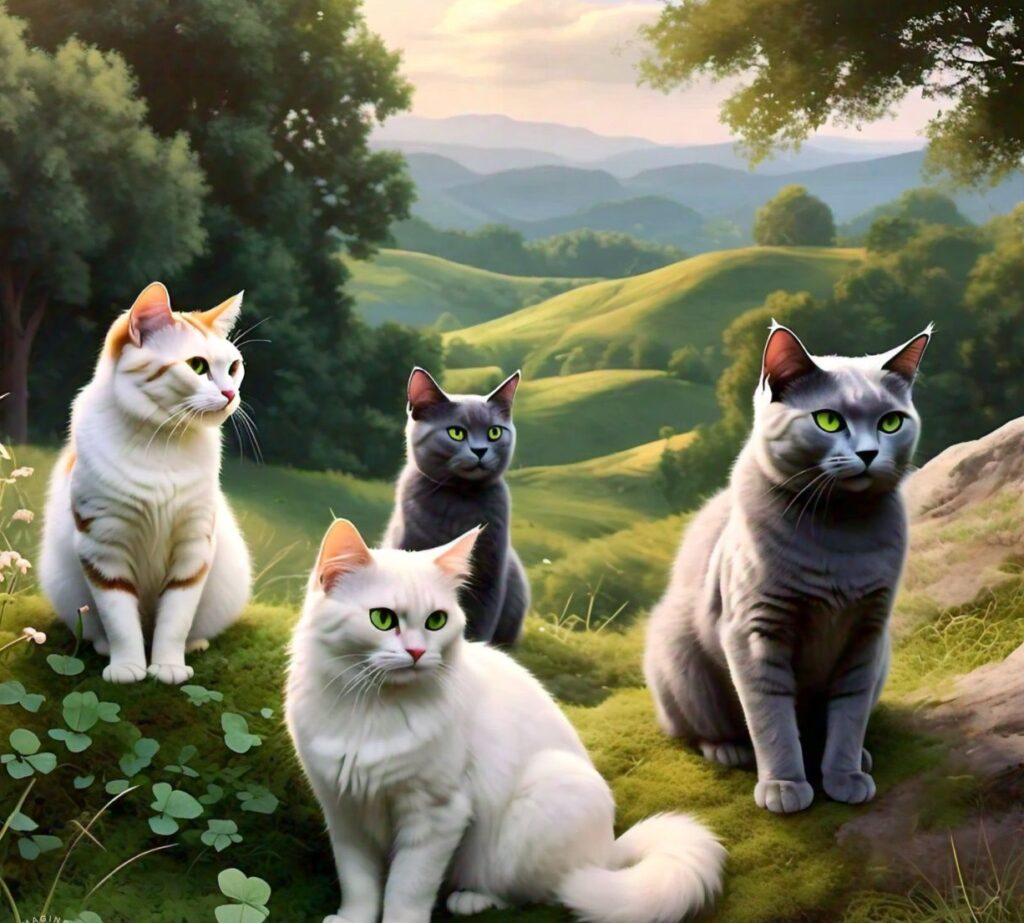For cat lovers seeking a truly one-of-a-kind companion, hairless cat breeds offer a captivating alternative. These charming felines, with their warm, smooth skin and playful personalities, have stolen the hearts of many. But with several recognized breeds, each with its own distinct characteristics, choosing the perfect hairless cat can be a delightful adventure. Let’s delve into the world of 8 recognized hairless cat breeds:
8 Recognized Hairless Cat Breeds
- Sphynx: The undisputed king of hairless cats, the Sphynx is the most well-known breed. This Canadian wonder, born from a natural genetic mutation, boasts a wrinkled, hairless appearance and a loving, energetic personality. Sphynx cats are known for their warmth, often seeking out cuddles to regulate their body temperature.
- Donskoy (Don Sphynx): Hailing from Russia, the Donskoy is another captivating hairless breed. Developed in the 1980s, Donskoy cats can be completely hairless or possess a fine coat of peach fuzz. These intelligent, active, and social felines are known for their athletic builds and playful demeanor.
- Peterbald: A relatively new breed developed in Russia during the 1990s, the Peterbald is known for its slender, elegant physique and captivating oriental eyes. Peterbalds can be completely hairless or have a coat of straight or curly hair. These playful, intelligent, and affectionate cats are a joy to have around.
- Ukrainian Levkoy: This rare breed boasts a truly unique appearance with folded ears and hairless skin. Developed in the early 2000s, the Ukrainian Levkoy is known for its intelligence, playfulness, and social nature.
- Bambino: This breed isn’t a natural occurrence but a charming cross between a Munchkin and a Sphynx. Bambino cats are instantly recognizable by their short legs and hairless skin. These playful, social, and energetic felines are a whirlwind of fun.
- Koa: Developed in the United States in the early 2000s, the Koa is another relatively new hairless breed. Koas can be completely hairless or have a coat of very fine, curly hair. These social, loving, and intelligent cats are known for their gentle personalities.
- Minskin: Another exciting breed resulting from the crossing of Sphynx and Munchkin cats, the Minskin is known for its short stature and hairless skin with patches of fur on some areas. These intelligent, playful, and entertaining Minskins are true lap cats, always up for a cuddle.
- Elf: Developed in the United States in the 1990s, the Elf is a captivating breed known for its folded ears and hairless skin. Elves are intelligent, playful, and social cats with a unique, almost gremlin-like appearance.





These are just a few of the fascinating hairless cat breeds that can make wonderful companions. Remember, while these breeds are hairless, they do require special care. Their lack of fur means they can get cold easily and may need sweaters or jackets in colder climates. Regular baths might also be necessary to remove skin oils.
If you’re considering welcoming a hairless cat into your life, do your research on the specific breed you’re interested in. With their unique personalities and captivating appearances, these special felines are sure to bring joy and warmth (quite literally!) into your home.
Do Sphynx cats smell?
Sphynx cats can have a distinct odor compared to furry felines. Here’s why:
- Lack of Fur: Fur absorbs oils and dirt, whereas Sphynx cats’ skin accumulates these directly. This can lead to a noticeable scent if not properly addressed.
- Skin Oils: Sphynx cats produce natural oils that can build up on their skin, contributing to their unique smell.
However, the intensity of the odor varies and isn’t inherently unpleasant. Here are some things to consider:
- Individual Cat: Like humans, each Sphynx cat can have a slightly different scent.
- Hygiene: Regular cleaning with gentle wipes or baths specifically formulated for Sphynx cats helps manage oil buildup and minimize odor.
- Diet: A high-quality diet can contribute to a healthier coat (even for hairless cats!) and potentially reduce odor.
Here’s the gist:
- Sphynx cats might have a noticeable smell compared to furry cats.
- It’s not necessarily a bad smell, but some describe it as earthy or musky.
- Regular cleaning and proper diet can help manage the odor.
If you’re concerned about the smell, talk to Sphynx cat breeders or owners for their experiences and advice on managing hygiene routines.
Are hairless cats good pets?
Hairless cats can be wonderful pets, but they do have some unique characteristics to consider to see if they’d be a good fit for your lifestyle. Here’s a breakdown of the pros and cons to help you decide:
Pros:
- Affectionate and Social: Many hairless breeds, like Sphynx and Donskoy, are known for being loving and crave companionship.
- Low Shedding: If allergies are a concern, hairless cats shed minimally, making them a good option for some allergy sufferers. (Keep in mind, allergies can still be triggered by dander and saliva).
- Warm and Cuddly: Despite their lack of fur, Sphynx cats have warm bodies and love to cuddle to regulate their temperature, making them perfect snuggle buddies.
- Unique Appearance: If you appreciate an unusual and captivating look, hairless cats offer a truly one-of-a-kind aesthetic.
- Playful and Energetic: Many hairless breeds are known for their playful and energetic personalities, keeping you entertained.
Cons:
- Higher Maintenance: Hairless cats lack fur’s natural protection, so they require regular baths and skin cleaning to remove oils. They can also get cold easily and might need sweaters in colder climates.
- Potential for Skin Issues: Some hairless breeds can be prone to skin problems like acne. Regular cleaning and a vet check-up can help manage this.
- Sun Sensitivity: Without fur, hairless cats are more susceptible to sunburn. Sunscreen formulated for cats is recommended for outdoor time.
- Stronger Odor: Sphynx cats, in particular, can have a distinct odor compared to furry cats due to skin oils. Regular cleaning and diet can help manage this.
- Cost: Hairless cats tend to be more expensive to purchase than some other breeds.
Here are some additional factors to consider:
- Lifestyle: If you lead a busy lifestyle and can’t provide frequent cleaning and attention, a hairless cat might not be the best choice.
- Living Space: Hairless cats can be prone to mischief, so providing enrichment activities and scratching posts is crucial.
- Family Situation: If you have young children who might be rough with a cat, a hairless cat’s delicate skin might be a concern.
Ultimately, the decision of whether a hairless cat is a good pet for you depends on your individual preferences and lifestyle. If you can provide the special care they require and appreciate their unique personalities, a hairless cat can be a loving and rewarding companion.
How much is a hairless cat?
The price of a hairless cat can vary depending on several factors:
- Breed: Some breeds, like the Sphynx, are more well-established and might be priced slightly lower than rarer breeds like the Ukrainian Levkoy.
- Breeder Reputation: Reputable breeders who prioritize health testing and proper care for their cats will likely charge more than less reputable breeders.
- Show Quality: Kittens bred for show quality with specific desired traits will cost more than pet-quality kittens.
- Location: Prices can vary depending on your geographic location.
With that in mind, here’s a general range for the cost of a hairless cat:
- $1,000 – $4,000 USD: This is a common range for pet-quality kittens from reputable breeders.
- $4,000 – $10,000+ USD: This range applies to show-quality kittens with exceptional pedigrees or rarer breeds.
It’s important to remember that the adoption fee is just the initial cost. Owning any cat requires ongoing expenses for food, litter, veterinary care, toys, and other supplies.
Do hairless cats live long?
The lifespan of hairless cats can vary depending on the breed and individual factors like overall health and care. Here’s a breakdown:
- Generally: Hairless cat breeds, like Sphynx and Donskoy, typically have an average lifespan of 8-14 years. This falls within the normal range for domestic cats.
- Sphynx Cats (Specifically): There have been some studies suggesting Sphynx cats might have a slightly shorter lifespan compared to other breeds, with an average life expectancy after the first year being around 6.7 years. However, this research is debated, and many Sphynx cats with proper care can live well into their teens.
Here are some key factors that can influence a hairless cat’s lifespan:
- Genetics: Just like any breed, a cat’s inherent genetic predisposition to health issues can play a role in lifespan.
- Diet: A high-quality diet formulated for their specific needs is crucial for maintaining good health and longevity.
- Veterinary Care: Regular check-ups, vaccinations, and addressing any health concerns promptly can significantly impact a cat’s lifespan.
- Care Regimen: Following proper cleaning routines for their skin and addressing potential sun sensitivity through sunscreen helps maintain their health.
Overall, with proper care and attention, hairless cats can live happy and healthy lives for many years. If you’re considering getting a hairless cat, choose a reputable breeder who prioritizes health testing and proper care for their kittens. Additionally, establishing a good veterinary care routine and providing them with the specific care they require will contribute to their well-being and potentially a longer lifespan.
What is the most expensive cat?
The most expensive cat breed is the Ashera. These captivating felines can reach a staggering price of up to $125,000 USD or even more.
Here’s what makes the Ashera so expensive:
- Rarity: Ashera cats are a hybrid breed, created by breeding an African serval, an Asian leopard cat, and a domestic house cat. The breeding process is complex and not widely practiced, contributing to their rarity and high cost.
- Large Size: Ashera cats are not your typical lap cat. They are known for their large size, resembling a small cheetah or leopard, with some reaching weights of up to 25 pounds.
- Exotic Appearance: Ashera cats boast a striking spotted coat with a variety of color options, adding to their allure and high price tag.
It’s important to note that due to their exotic lineage, Ashera cats might not be legal to own in all areas. Always check local regulations before considering purchasing one of these fascinating felines.
Are hairless cats healthy?
Generally, hairless cat breeds can be healthy companions, but like any breed, they have some specific considerations. Here’s a breakdown:
Overall Health:
- Relatively Healthy: Most recognized hairless cat breeds, like Sphynx and Donskoy, are considered generally healthy with lifespans similar to other domestic cats (8-14 years).
Potential Health Concerns:
- Skin Issues: Due to their lack of fur, hairless cats are more prone to skin problems like acne. Regular cleaning and a veterinarian’s guidance can help manage this.
- Hereditary Conditions: Some hairless breeds might have a predisposition to certain genetic health issues. Responsible breeders screen their cats for these conditions.
- Sun Sensitivity: Without fur, hairless cats are more susceptible to sunburn. Sunscreen formulated for cats is recommended for outdoor time.
Factors Affecting Health:
- Breeder Reputation: Choosing a reputable breeder who prioritizes health testing in their breeding program is crucial.
- Diet: A high-quality diet appropriate for their needs helps maintain good health.
- Veterinary Care: Regular check-ups, vaccinations, and addressing any health concerns promptly are essential.
- Care Regimen: Following proper cleaning routines for their skin and addressing sun sensitivity helps keep them healthy.
Here are some additional points to consider:
- Sphynx Cats (Specifically): Some studies suggest Sphynx cats might have a slightly shorter lifespan compared to other breeds. However, with proper care, many Sphynx cats live well into their teens.
- Hairless Doesn’t Mean Hypoallergenic: While shedding is minimal, hairless cats can still trigger allergies in some people due to dander (dead skin flakes) and saliva.
In Conclusion:
Hairless cats can be healthy and loving companions, but they require specific care compared to furry felines. Responsible breeding, proper diet, veterinary care, and a dedicated care routine all contribute to their well-being. If you’re considering a hairless cat, do your research on the breed and choose a reputable breeder who prioritizes health.
Read More: Keep Visit Our Cats Session for More Updates.
FAQ: Hairless Cat Breeds User Guide
This FAQ provides answers to some commonly asked questions about the user guide on recognized hairless cat breeds.
General Questions
- What is a hairless cat breed?
Hairless cat breeds are felines with little to no fur. They come in various recognized breeds, each with distinct characteristics.
- How many recognized hairless cat breeds are there?
The exact number can vary depending on the registry, but this guide focuses on the 8 most commonly recognized hairless cat breeds by major associations like TICA (The International Cat Association) and CFA (Cat Fanciers’ Association).
- Are hairless cats hypoallergenic?
No cat breed is truly hypoallergenic, but hairless cats might be a better choice for allergy sufferers because they shed minimally. However, allergens can still be present in their dander (dead skin flakes) and saliva.
Specific Breeds
- What is the most popular hairless cat breed?
The Sphynx is the most well-known hairless cat breed, known for its loving personality and wrinkled, hairless appearance.
- What is the rarest hairless cat breed?
The Ukrainian Levkoy, with its folded ears and hairless skin, is one of the rarest recognized hairless cat breeds.
- Do hairless cats need special care?
Yes, hairless cats require special care due to their lack of fur. They can get cold easily and might need sweaters in colder climates. Regular baths might also be necessary to remove skin oils.
- Which hairless cat breed is most social?
Many hairless cat breeds are social, but the Donskoy, Peterbald, and Koa are known for being particularly social and affectionate.
User Guide
- What information does the user guide provide?
The user guide offers a detailed description of 8 recognized hairless cat breeds, including their physical characteristics, personalities, and some basic care needs.
- Who should use this user guide?
This user guide is intended for anyone interested in learning more about hairless cat breeds and considering welcoming one into their home.
I hope this FAQ helps! If you have any other questions not covered here, feel free to refer back to the user guide for more details.


